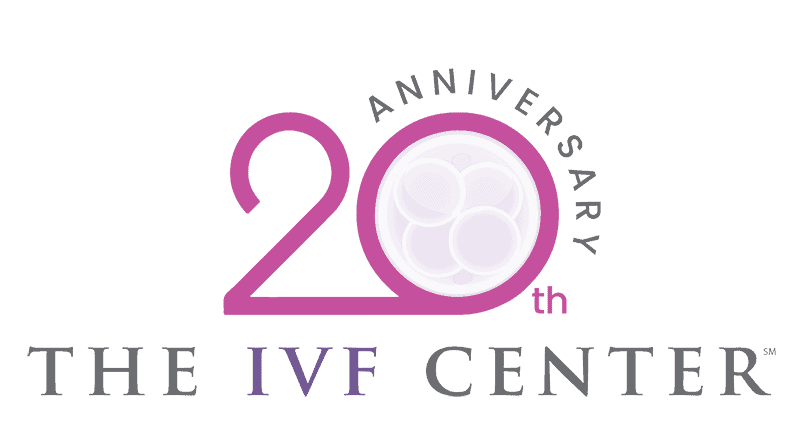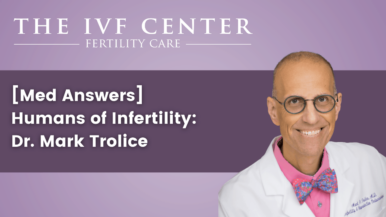Fertility is a health issue that is rarely surpassed in importance for women of reproductive age. To demonstrate the significance of this issue, the American Society for Reproductive Medicine (ASRM) established a public service announcement campaign called “Protect Your Fertility.”
 The CDC reports the number of women ages 15-44 with impaired ability to have children is 6.7 million.
The CDC reports the number of women ages 15-44 with impaired ability to have children is 6.7 million.
As a result, this article is essential and timely for women desiring to have a child now or in the future. All women should perform a “SWAT” analysis to optimize their reproductive potential.
SWAT ANALYSIS: You may recognize this exercise from a conversation you had with a colleague about making big decisions, or maybe even from your college business courses. We’ve switched up the rules a bit for our SWAT analysis to look at the areas of your health that are good indicators for your future fertility.
Sexually Transmitted Infections (STIs)
If hypertension is considered the silent killer of the body, then STIs (particularly Chlamydia) are considered the silent killer of fertility due to the damage they cause within the fallopian tubes. Although not practicing safe sex (specifically barrier contraception) may risk pregnancy, paradoxically it also risks subsequent infertility and ectopic (outside the uterus) pregnancy. The latter complication increases from a baseline of 2 to 8 percent. The incidence of tubal factor infertility increases 7-fold, 16-fold, and 28-fold, following one, two, and three infections to the fallopian tubes, respectively. Aggressive screening and prompt treatment may reduce the damage to reproductive potential.
Weight Measurements
Twelve percent of all infertility cases are a result of a woman being either over or underweight with the proportion being 6 percent from each. The most common hormonal abnormality from an elevated body mass index is Polycystic Ovarian Syndrome (PCOS) – affecting 5-10 percent of reproductive- aged women. This condition results in chronic ovulatory dysfunction and an increased risk of the metabolic syndrome. An extremely low body mass index can also affect ovulation dysfunction and is often associated with the female athlete triad (amenorrhea, bone loss, and eating disorder). In men, obesity results in a hormonal disturbance that decreases testosterone and sperm counts.
According to ASRM guidelines, “if a woman’s body weight is less than 95 percent of predicted ideal body weight or greater than 120 percent of predicted ideal body weight, weight management should be the primary therapeutic recommendation. More than 70 percent of women who are infertile as the result of body weight disorders will conceive spontaneously if their weight disorder is corrected through a weight-gaining or weight-reduction diet as appropriate.” Lastly, an elevated body mass index may reduce the ability to conceive by 50 percent.
Age
As more women are delaying childbirth and more “baby boomers” are reaching midlife, the problem of diminished ovarian reserve is increasing. Ovarian aging has several major medical consequences including decreased bone mass with risk of fracture, abnormal uterine bleeding from anovulation, infertility, and vasomotor symptoms. The main impact on pregnancy rate is oocyte (egg) quality and quantity. As a result, fertilization is impaired, implantation is reduced, and miscarriage is increased along with the increased potential for chromosomal abnormalities of the fetus. Initiation of the first pregnancy should be encouraged to begin before a woman turns 30 years of age. Currently, the best measures of ovarian age are a pelvic ultrasound to measure the number of small benign cysts (<10mm) and a blood antimullerian hormone level test.
More recently, males over the age of 40 have been implicated in increased risk of infertility and miscarriage as well as offspring with congenital anomalies and autism. While this data is preliminary, certainly further studies are vital due to the delaying of parenting in the population.
Tobacco Use
 Approximately one-third of all men and women in this country smoke cigarettes and this behavior results in a 40 to 60 percent increase in infertility. Smoking accelerates the loss of eggs and results in higher rates of miscarriages, ectopic pregnancies, and a several year earlier onset of menopause. In considering assisted reproductive technology (e.g. in vitro fertilization – IVF – therapy), ovarian reserve, ovarian response to fertility medication, the number of oocytes retrieved and fertilized, and the pregnancy rates are reduced in smokers compared to non-smokers. The pregnancy rate in IVF treatment cycles is decreased in smokers by 34 percent. The problem is not limited to women – sperm counts are reduced an average of 22 percent, and show a dose response with increased cigarette smoking correlating to a greater reduction in sperm count. Despite counts remaining in the normal range, sperm fertilization potential is reduced from smoking.
Approximately one-third of all men and women in this country smoke cigarettes and this behavior results in a 40 to 60 percent increase in infertility. Smoking accelerates the loss of eggs and results in higher rates of miscarriages, ectopic pregnancies, and a several year earlier onset of menopause. In considering assisted reproductive technology (e.g. in vitro fertilization – IVF – therapy), ovarian reserve, ovarian response to fertility medication, the number of oocytes retrieved and fertilized, and the pregnancy rates are reduced in smokers compared to non-smokers. The pregnancy rate in IVF treatment cycles is decreased in smokers by 34 percent. The problem is not limited to women – sperm counts are reduced an average of 22 percent, and show a dose response with increased cigarette smoking correlating to a greater reduction in sperm count. Despite counts remaining in the normal range, sperm fertilization potential is reduced from smoking.
As mentioned, men are not immune from lifestyle risks affecting fertility and should follow the following recommendations: avoid drug use, smoking and excessive alcohol (women should discontinue alcohol use when pregnancy is desired); avoid excessive scrotal temperature to prevent impaired spermatogenesis; and avoid STIs.
For more information on educating your patients to reduce their risk of infertility, please visit the ASRM sponsored website, as well as their home page on human reproduction, http://www.asrm.org.






